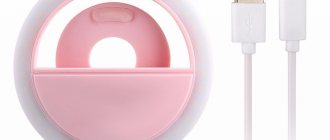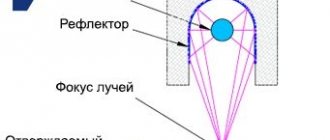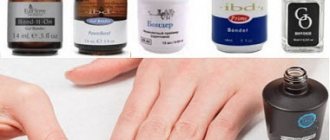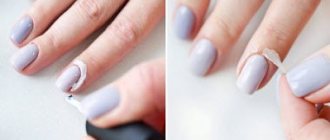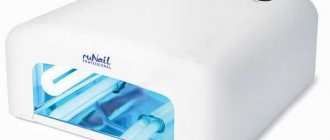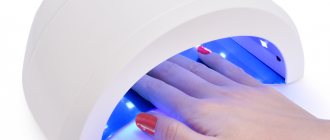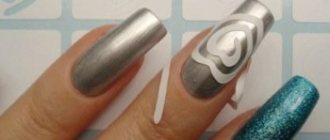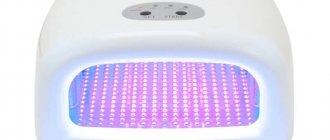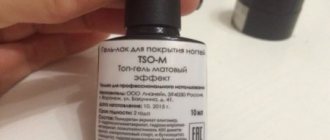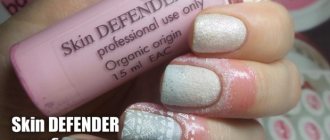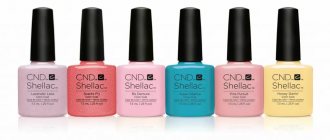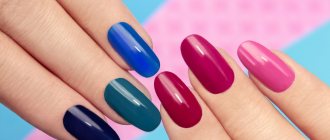Ultraviolet lamps have long been used to treat rooms in medical institutions. Later they began to be called bactericidal and used at home. Devices are often purchased by parents after the birth of a child to protect him from harmful microorganisms.
As interest in UV lamps grew, different types of devices began to appear that met the specific needs of buyers. For example, some devices used in hospitals are not suitable for use at home. You should consider the types of emitters, operating principles and purpose.
What is a UV lamp
An ultraviolet lamp is a device that emits artificial light that has bactericidal properties. The lamp emits part of the spectrum of sunlight - a neon purple glow is formed in the bulb. When the device is connected to the network, the mercury vapor inside the bulb begins to interact with electromagnetic discharges, emitting ultraviolet light.
Fig. 1 – UV irradiator.
Instead of mercury, cadmium, indium or bismuth is sometimes present inside the housing. The light emitted is in the range between X-rays and rays visible to the human eye. The UV lamp has the form of an elongated bulb, along the edges of which electrodes are installed that create a discharge to interact with mercury. Outwardly, it resembles a standard fluorescent lamp.
Reviews about lamps
- I started doing manicures quite recently, using a hybrid lamp on the advice of a friend of an experienced manicurist. It is very economical and dries quickly. Anastasia
- I have been using a UV lamp for a long time, I often do manicures for my clients, they are satisfied. I am also satisfied with the performance and quality of the device, I am not ready to exchange it for another. Elena
- I'm just learning design techniques with shellac. I needed to buy a lamp, I thought for a long time, read forums, but settled on an ultraviolet one. I am satisfied with the quality, price and design of the device. Valeria
Principle of operation
The operating principle of an ultraviolet lamp is almost identical to a quartz lamp. The main difference is that here, in most cases, special uviol glass is installed instead of quartz. It is necessary to filter aggressive UV radiation. Thanks to this, the device does not emit ozone, but only harmless soft ultraviolet light.
Inside the housing there are molybdenum current-carrying threads and electrodes in mercury vapor. The case is sealed and equipped with a durable base.
Tips for buying a SUNUV brand lamp
Both professionals and beginners who want to purchase a SUNUV manicure lamp should pay attention to the following parameters:
- Power. It is preferable for manicurists to choose a device with a power of 48 W. Inexperienced or novice gel polish lovers should start with a less powerful 36 or 24 W dryer.
- Dimensions. SUNUV lamps are quite compact, lightweight, most are designed for one hand, but there are models for drying all ten fingers at once. They are slightly larger in size and are best used by professionals working with clients.
- Has a removable bottom. It is inconvenient to do a pedicure in a lamp with a fixed bottom.
- Additional options: timer, display, cooling system.
- A wide price range will allow you to choose the optimal solution.
Most SUNUV lamps have the ability to switch power from 48 W to 24 W and back. To switch the power, press and hold the Double power , after which you will notice how the LEDs change their brightness.
For beginners, one of the best options would be SUNUV 5 or SUNUV 6 - quite powerful lamps that allow you to dry gel polish and most gels of any consistency quite well, while having a good price-quality ratio. SUNUV 9x Plus - relatively low price, good quality, enough power to learn the basics of manicure.
We would advise professionals to take a closer look at the more expensive and powerful models SUNUV 5 Plus or SUNUV 7 as they have all the convenient functionality that allows them to save time for professionals who have a large flow of clients.
Varieties
Among existing UV emitters for disinfection, bactericidal and quartz lamps have become the most popular. In classical instruments, the flask is made of quartz glass. During operation, the device releases harmful ozone into the air.
The main difference between a UV lamp and a quartz lamp is different glasses.
Such devices are more often used for treating medical and industrial premises, where a person does not necessarily need to be present at the time of treatment. A uviol glass flask is installed in the bactericidal emitters. Structurally, ultraviolet lamps are as follows:
- portable . Due to their compactness and light weight, they are widely used in everyday life. Used to treat toilets, tables, sinks and shoes;
- open . Kill pathogenic microbes in the air and on all surfaces. There should be no animals, people or plants in the room when the device is operating. Suitable for processing large spaces;
- closed . They are called closed-type recirculators. They are often used in everyday life, since processing can be carried out in the presence of a person. The lamp design includes a fan. It is necessary to draw air inside, where disinfection with ultraviolet rays occurs. Next, the purified air goes back into the room.
Fig. 3 – closed type lamps.
In addition to design differences, ultraviolet lamps are divided by type of installation. They can be:
- floor . Best suited for disinfecting large spaces. They are often placed in a corner of the living room, hallway, bedroom or nursery. Sometimes used to disinfect wardrobes;
- mounted _ Installed on the ceiling or wall. The lamp must be mounted only on a reliable mount. Thanks to the large number of shapes and colors, the device can be selected taking into account the design of the room. The devices are characterized by increased efficiency;
- desktop _ They usually have a laconic design and small size. Such models can be used in any room, regardless of whether there are people there or not.
Fig. 4 – desktop UV irradiator.
Some models of ultraviolet color lamps are equipped with an automatic connection mechanism. If the disinfectant will be used at home, it is better to choose a portable model.
Kinds
The manicure lamp has a simple design. This is a small device with special-purpose lamps built inside it. They have different types of glow, power and results, respectively. Gel coating on nails without high-quality polymerization simply will not harden. Therefore, it is important to understand that not every lamp is suitable for your salon. The devices are manufactured in different sizes and have different types of switches. The design of the devices is also different.
The convenience of the procedure and the result of the manicure depend on the right choice. Let's talk in detail about the types of lamps. The main principle of classification of manicure lamps is the type of their glow.
They are divided into the following types:
- UV (ultraviolet);
- LED;
- Hybrid;
- CCFL lamps.
Each variety has its own characteristics and subspecies. Light sources, for example, vary in power - from 9 to 66 Watts. We will also talk about this below.
Ultraviolet (UV lamps)
This type is by far the most common. Such devices are not expensive, simple and understandable to users. Ultraviolet exposure can polymerize any type of gel. But, unlike other devices, it takes longer to dry. At the same time, the varnish on the nail plate becomes durable and lasts a long time (sometimes more than three weeks).
The UV device has a significant drawback - the lamps inside are quite fragile and quickly fail. Such a device must be handled delicately. Otherwise, repairs will become an endless task.
When choosing a UV device, you need to look at its power. The lowest is 9 W. Such lamps were popular several years ago, but are now not used even for home procedures. Over time, the composition of the gels changed to include more stable components that polymerize only at high power.
It is now recommended to purchase a lamp of 36 W or more. Such devices process any type of helium composition. Four sources are built inside the structure (each power is 9 W).
Ultraviolet models are not expensive - from 1,500 rubles. But at the same time they have convenient buttons for switching modes and a timer. The drying time can be set from 5 seconds to infinity. It depends on the coverage. The thicker the consistency of the gel, the longer the nails stay under the lamp.
UV sources must be changed regularly, otherwise the quality of drying will decrease. This is done once every six months. But here the flow of customers is taken into account. If 3-4 people are admitted per day, then six months is the optimal period for replacement. If there are 1-2 clients per day, lamps can be replaced once a year.
There are two types of UV lamps: electronic and induction. Electronic types are lighter in weight and less reliable. Induction lamps are heavy - from 2 kg, but they are more durable and react little to voltage changes. But induction sources are also more expensive.
If the material is marked “LED”, it should not be dried in a UV lamp. For this purpose, special devices have been created, which we discuss below.
Tabletop UV lamp for manicure
Floor UV lamp for pedicure
LED devices
An LED device is very different from an ultraviolet device. Firstly, such a device dries gels many times faster, since it has higher power and better quality radiation. A UV lamp will dry one helium layer in two minutes, and an LED will polymerize the same layer in no more than 30 seconds. Such a source allows the master to save time and accept a larger number of clients.
The second difference between an LED lamp and a UV lamp is ease of use. If an ultraviolet lamp requires special skills, then “LED” can be used even by beginners at home. These devices are the most modern of all types on the market. “They” are suitable for drying any polymeric materials.
Diodes or strips are built in as light sources. Diode models can work for more than five years without replacement! This is another great advantage of LED equipment. But there are still disadvantages. For example, during a manicure, clients often feel a burning sensation on the surface of the nail. This occurs as a result of intense luminescence and high-speed polymerization. The polymer quickly hardens in such conditions, and the nail surface does not have time to “get used to it.” She is quickly pulled away. Hence the burning sensation. But only people with thin or damaged nail plates should be afraid of this.
The burning problem can be solved, since most LED models have a function to reduce the glow intensity. At the client's request, you can reduce the heating level. This will increase the polymerization time. There are modifications with fans. Especially for such cases.
LED lamps, like ultraviolet lamps, are gradually becoming a thing of the past. They are being replaced by hybrid models.
LED lamp with LED strip
LED lamp with LED lamps
Hybrid lamps
Universal or mixed lamps are called hybrid. They are becoming increasingly popular among craftsmen, as they combine two types of light: LED and UV, or LED and CCFL. These are improved units. Convenient to use. If, for example, your client's nail plates are sensitive to LED treatment, you can switch and continue drying with a UV source. The cost of hybrid lamps is higher, but given the characteristics, “hybrids” are widely popular.
UV/LED hybrid lamp
Hybrid LED and CCFL lamp
CCFL lamps
The operating principle of a CCFL lamp is similar to ultraviolet sources. Fluorescent illuminators work here, which, due to the cold cathode, do not heat the material during the drying process. And there is no burning during the process.
CCFL is also used for all types of polymers. Power up to 18 Watt.
In addition to the glow principle, there are other classifications of manicure lamps:
- By size: small, medium and large. The choice depends on the scale of activity and the preferences of the master. Some people find it convenient to work with a large device, while others prefer miniature devices. Medium and small products can be transported in a bag. They are convenient if, for example, a master practices visiting clients’ homes. Large lamps are purchased for salons. They have a convenient design, since both hands can be placed inside at once. This is appreciated when there is a large client flow.
- By shape: open and closed products. Closed models are made in the shape of a crescent. They have only one side open - on the user's side. Through (open) can be rectangular or semicircular. They have a drawback - they shine through.
Closed CCFL lamp
Open (through) CCFL lamp
Ultraviolet lamp device
The ultraviolet lamp consists of the following elements:
- flask made of uviol or quartz glass;
- tungsten electrodes;
- metal base;
- molybdenum threads;
- coupling (ceramic);
- connector
Fig. 5 – design of an ultraviolet lamp.
What is it for?
Ultraviolet lamps are used:
- for medicinal purposes. For laryngitis, sinusitis, sinusitis, non-purulent otitis media, influenza and tonsillitis. In the midst of an epidemic, ultraviolet lamps are used as a bactericidal agent. Ultraviolet radiation therapy is not recommended for children under 3 years of age. But this is possible if the newborn has a mild form of liver dysfunction (manifested as jaundice). For a runny nose and sore throat, a model with a short wavelength is suitable. Often included are attachments;
- for water purification. The devices look like a tank with a lamp. The disinfector treats the liquid with rays, destroying harmful microbes. The output is clean and usable water. It is important to learn how to determine the amount of ultraviolet light needed for cleaning. In addition, you need to change the lamp when it begins to weaken;
- for plants. When they suffer from a lack of ultraviolet radiation, the issue can be solved with the help of a phytolamp. Artificial radiation will help ensure the process of photosynthesis, which is necessary for full development.
Fig. 6 – device for water purification.
What does ultraviolet lamp kill?
Thanks to ultraviolet rays, the device is able to kill dangerous viruses, bacteria (staphylococci, bacilli, enterococci), fungi (yeast and mold) and mold.
Fig. 7 – microorganisms susceptible to radiation.
The antibacterial effect is explained by the property of short-range ultraviolet rays (up to 280 nm). They are able to penetrate the DNA of pathogenic microorganisms and destroy it from the inside, preventing further reproduction.
Also read: Differences between a recirculator and a quartz lamp.
How to use a lamp correctly at home
It is believed that ultraviolet radiation, even in minimal quantities, can be harmful to health. When using a disinfection device, you must adhere to safety precautions. Rules for using the disinfectant:
- the bactericidal device should be turned on only if there are no people in the room and only for the period of time specified in the instructions;
- If you need to treat any parts of the body with ultraviolet light, you need to make sure that the device is intended for these purposes. Before turning on, you should put on special glasses (often they are included) and close your eyes. It is also worth adhering to the recommended mode, distance to the lamp and treatment time;
- If a spectrum “C” lamp was used, it is necessary to ventilate the room after the procedure. This is necessary to remove accumulated ozone;
- When using a household recirculator, just in case, you should make sure that it is truly ozone-free. If this is not the case, you cannot turn it on in the presence of people in the room.
Fig. 8 – areas of application of recirculators.
Design of lamps for drying nails
From a technical point of view, an ultraviolet lamp is a fairly simple and understandable device. The elementary design of the device includes a housing, inside of which there are special light bulbs, and outside – a control panel. Some models can be supplemented with timers, fans, mirror surfaces, retractable panels and other elements of varying degrees of usefulness, but the general principle of operation will not change from them.
UV lamps can vary greatly in size. This is an important factor to consider based on your goals and priorities. There are models designed for drying two hands at once. They are more bulky, heavier and more expensive, but they save some time. If you are not considering professional equipment, but are looking for something suitable for personal use, more compact and budget options will suit you. Some girls want their manicure lamp to be a specific color. The design of the case can be very different: from white and metal to red and hot pink. Therefore, if you select a UV lamp for your interior, you can find a harmonious combination.
A much more important parameter is not the appearance of the device, but its “filling”, on which the power of the nail lamp depends. First of all, you must understand the fundamental design feature . Light bulbs inside the housing can be of two types: fluorescent and LED. This determines what kind of manicure lamp you will have: in the first case - ultraviolet, in the second - LED (ICE). Next, we will look in detail at the features of each type, talk about the advantages and disadvantages of different lamps and try to determine which model is right for you.
How long can you stay under the lamp?
To disinfect the room, the device is turned on for approximately 15-30 minutes. Even if it is a harmless ultraviolet lamp, it is better to leave the room while it is working and take plants and animals with you. Upon completion of the procedure, the room must be checked. If a child has signs of acute respiratory infections, the doctor may prescribe treatment with ultraviolet rays.
Fig. 9 – Lamp for treatment “Sun”.
To do this, the child is put on special glasses, seated or placed on a couch (10 centimeters from the device) and the procedure is carried out. It lasts no more than 10 minutes. The general course of treatment is 3-4 days. After 3 sessions, cold symptoms should disappear. When treating the nasal mucosa, it can be irradiated only after the amount of discharge has decreased. Depending on the intensity of symptoms, the daily radiation dose can be reduced to 3 minutes, then to 1.
Equipment and its characteristics
A UV lamp is used to polymerize the gel when creating a nail coating. It is also used for extensions. The time during which the gel needs to be dried depends on the quality of the equipment (its power).
How long should you keep gel polish on (minutes) in a 9-watt lamp? The total time that will be spent “under the lamp” is 6 minutes. A 9 W lamp is the cheapest device with low power, so the drying time of the coating with such a device is quite long. The option with more power will be more expensive. If you don’t plan to cover your nails with gel very often, then you don’t have to spend money on a more powerful “unit”. Or you can choose a “partner” that is a little more powerful, say, 18 W.
For manicure at home, the best option is with an 18-watt lamp; the coating “hardens” in 2 minutes.
If the manicure “device” is of high quality, then it has sufficient drying power. In the case of a power of 36 W, the base will “harden” in 1 minute, and the remaining layers will have to spend 2 minutes each. The ideal device for manicure is designed for 36 W.
Is it possible to dry gel polish in a 9-watt lamp of Chinese origin? Yes, the estimated time for drying the coating will be 60 seconds (per layer). The market also offers hybrid samples of manicure equipment that perform drying with several types of rays.
It is important to note that an LED lamp is an expensive product that is used for expensive coatings. This Ice coating is of high quality, but it also costs a lot.
If you use regular gels for manicure, then there is no need to use an Ice lamp, since drying can be done using a UV “unit”, without the high costs of purchasing an Ice model and a hybrid. Therefore, the question of how long to dry gel polish in an Ice lamp 9 watts, 36 watts immediately disappears.
Advantages and disadvantages
Among the advantages of ultraviolet bactericidal lamps, several main ones can be distinguished:
- due to their diversity, the devices can be used in different fields of activity, as well as in everyday life;
- most models last a long time at a low price;
- devices almost instantly reach operating radiation power levels;
- modern recirculators are safe for health; they can be turned on without leaving the room.
Disadvantages include the release of ozone into the air. If you do not follow safety rules, you can harm yourself. In addition, lamps should not be simply thrown away with the rest of the trash. To do this, they are taken to specialized reception points. Also, do not forget that you need to constantly monitor the correct operation of the lamp, gradually it will begin to lose its properties.
Video: Are you sure that you have chosen the right UV lamp for your animal?
A little about the company
The manufacturer of SUN manicure lamps is the Chinese company SUNUV (Shenzhen UVLED Optical Technology Co., Ltd.), the largest supplier of LED lamps and luminaires in the world. The brand introduced its first UV lamp for drying nails in January 2016. The device was of such high quality that demand for it immediately skyrocketed. Its price was affordable both for beauty salons and for ordinary people who like to do their own manicures.
In a short time, the SUNUV brand entered the top ten manufacturers and suppliers of LED lamps in the world and became the first to acquire its own warehouses outside of China. Russia is one of the countries where the company has warehouses, so purchasing an original SUN lamp is easy. This does not mean that counterfeits of the device do not exist. But, before we talk about the differences between the original and the fake, we recommend that you familiarize yourself with the models of SUN lamps and choose the best option for the job.
Life time
On average, bactericidal lamps last 8000-9000 hours. It depends on their purpose and design. The service life depends on whether the emitter overheats during operation or not.
Fig. 10 – service life of UV irradiators.
During operation, the lamp gradually wears out. This is reflected in the radiation spectrum, so over time its properties will begin to change. If deviations in the operation of the device are noticed, it is better to replace it with a new one.
